‘To walk three miles, or four miles, or five miles, or whatever it is, above her ankles in dirt, and alone, quite alone! what could she mean by it? It seems to me to show an abominable sort of conceited independence, a most country-town indifference to decorum.’
Jane Austen, ‘Pride and Prejudice’
It took a national lockdown for me to fully appreciate the Great Lines.
March 2020. Covid-19. Lockdown. Everyone ordered to stay at home, stay two metres apart, and only go outside for one hour a day. Well, those of us who weren’t frontline workers risking their lives for the rest of us, anyway.
I’d been commuting into an office in London five days a week for my whole working life until then. Gillingham to London Cannon Street, London Victoria, occasionally London Blackfriars – and back again – Monday to Friday for about 15 years. More on commuting another time. For now, suffice it to say that leaving the house by 7:00am and getting home around 7:00pm on weekdays doesn’t leave much time for exploring the neighbourhood after work.
That all changed in March 2020. Suddenly my office wasn’t an open plan space with a view over central London; it was the dining room in our tiny house. My brisk walk to and from Gillingham station, and London-speed march to the office and back again at the other end, was no longer available. Going out in the evening was totally kiboshed. I wasn’t furloughed, nor was the Man of Kent, so we worked from home, at alternate ends of the dining room table. That’s a heck of a lot of time in one small house, on top of plenty of sedentary telly-watching after work. Getting out for some exercise and fresh air was no longer baked into the day as part of my commute, or an optional weekend leisure activity. It was now imperative. A sanity-saving daily mission.
So I, and often the Man of Kent too, started going out for late afternoon walks in a big, open space not far from here – the Great Lines Heritage Park.
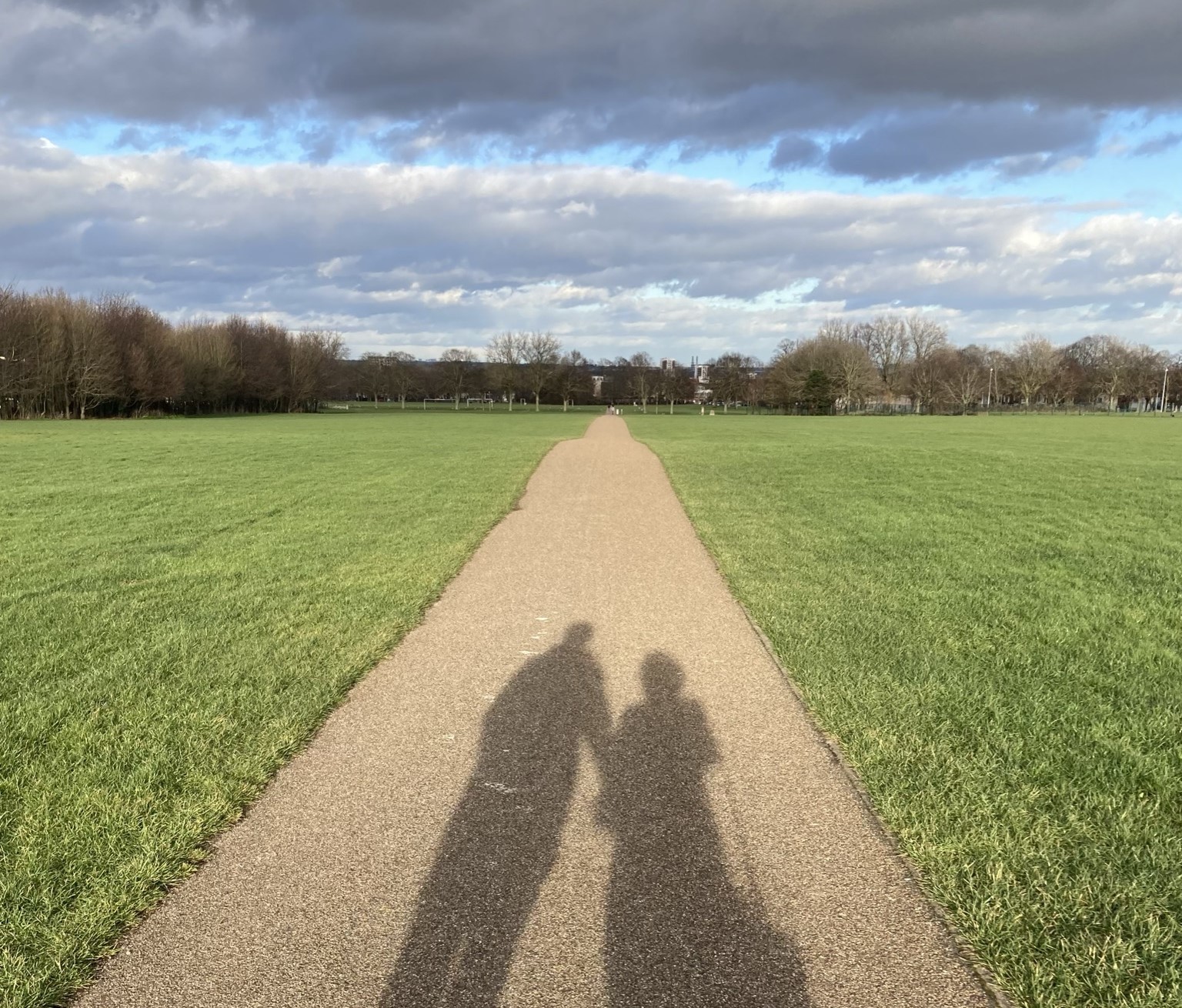
The Great Lines Heritage Park (also known as the Field of Fire) connects Chatham, Gillingham, Brompton and Fort Amherst via a series of criss-crossing paths. It’s one of the highest points in the area. From the top of the Great Lines, you can see miles of Medway, from the steep terraces of Luton to the hulk of the Pentagon Centre in Chatham below. It’s a beautiful walk, and one that I’ve never tired of.
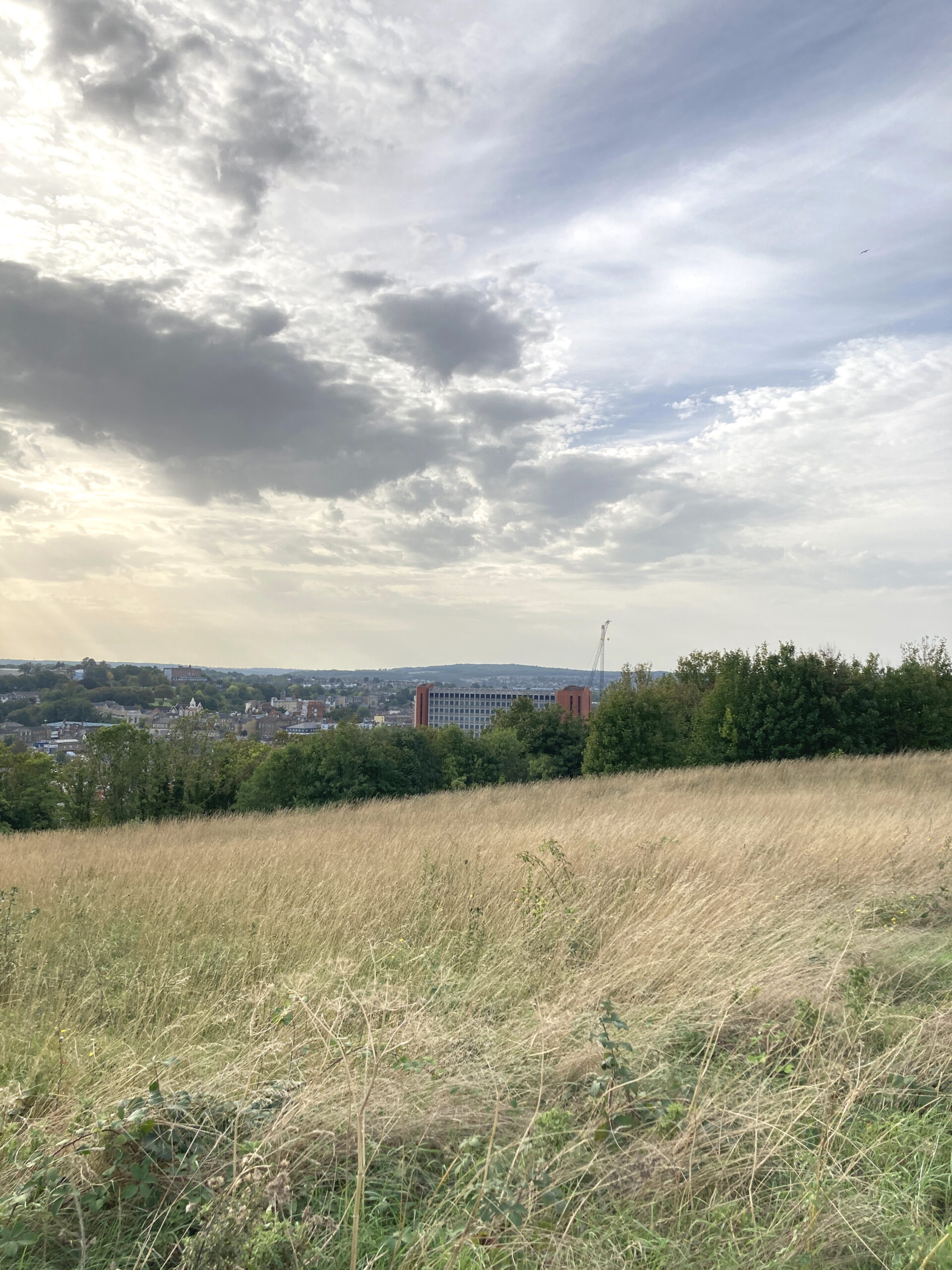
As you stand atop those quiet, grassy hills, looking at the view and listening to the wind mingled with muffled traffic noise, you might not realise that in the past, you could have watched over naval battles, horse races and football matches from the exact same spot. Time for a quick, potted history.
The Great Lines became fortified after a deeply embarrassing naval raid in June 1667, when the Dutch navy managed to sail up the river Medway pretty much like they owned the place during the Second Anglo-Dutch War. During the skirmish, the Dutch navy captured three ships, notably the English flagship, the Royal Charles. The capture of the latter was particularly humiliating for the English fleet, as it was the ship that had carried King Charles II back to Dover after the Restoration. Naval commander Michiel de Ruyter took the ship back to the Netherlands, where it was later broken up.
Whilst on holiday in Amsterdam last year, the Man of Kent and I discovered that the Rijksmuseum holds several artworks depicting the battle, including two paintings by Willem Schellinks. The museum also has the original stern decoration of the Royal Charles. The Man of Kent bristled at seeing this affront to his local pride whilst on holiday, but had to admit that it was rather splendid – and unusual – to see Medway feature in one of the world’s finest art collections.
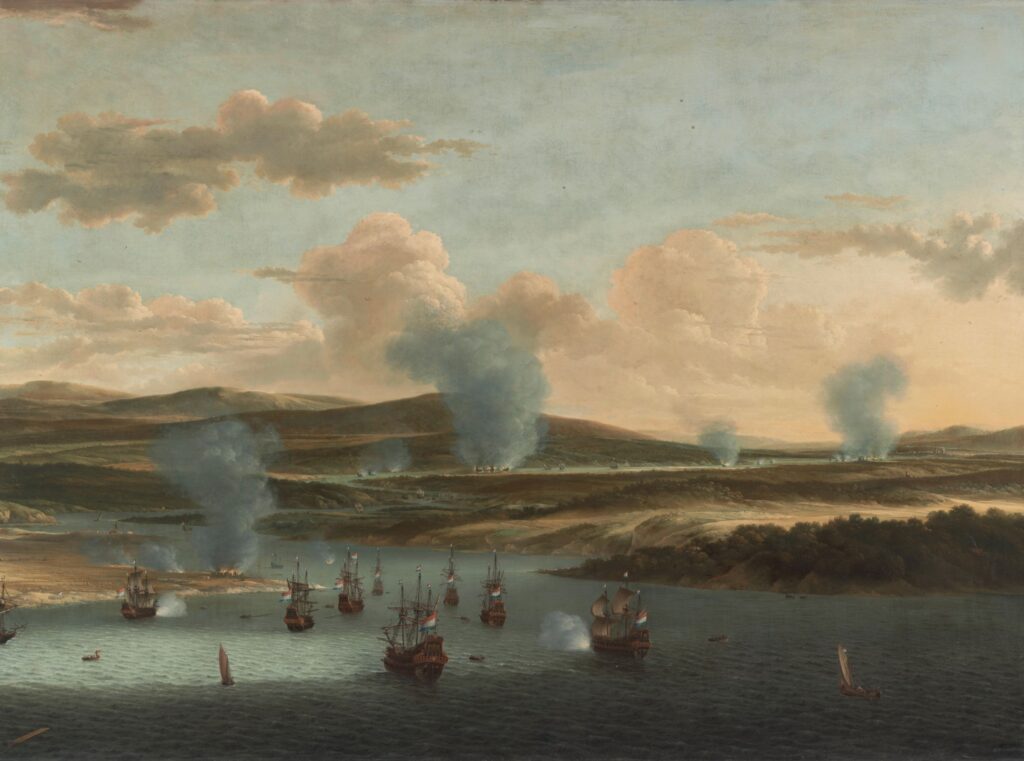
After the raid, defences were put in place and if you are at the top of the Great Lines you can see why; the hills command a clear view of any potential enemies sailing up the river or approaching by land. More defences were constructed in Napoleonic times and the area was fortified further during World War Two.
The Chatham Naval Memorial stands proudly overlooking Medway from the top too, its walls lined with the names of sailors who gave their lives in service to their country in the First and Second World Wars. The original WWI memorial was designed by Sir Robert Lorimer with sculpture by Henry Poole. It is exactly the same as the memorials at Plymouth and Portsmouth, following the Admiralty Committee’s decision that all three of these manning ports should have identical memorials. The Chatham memorial was unveiled on 26 April 1924 by the Prince of Wales.
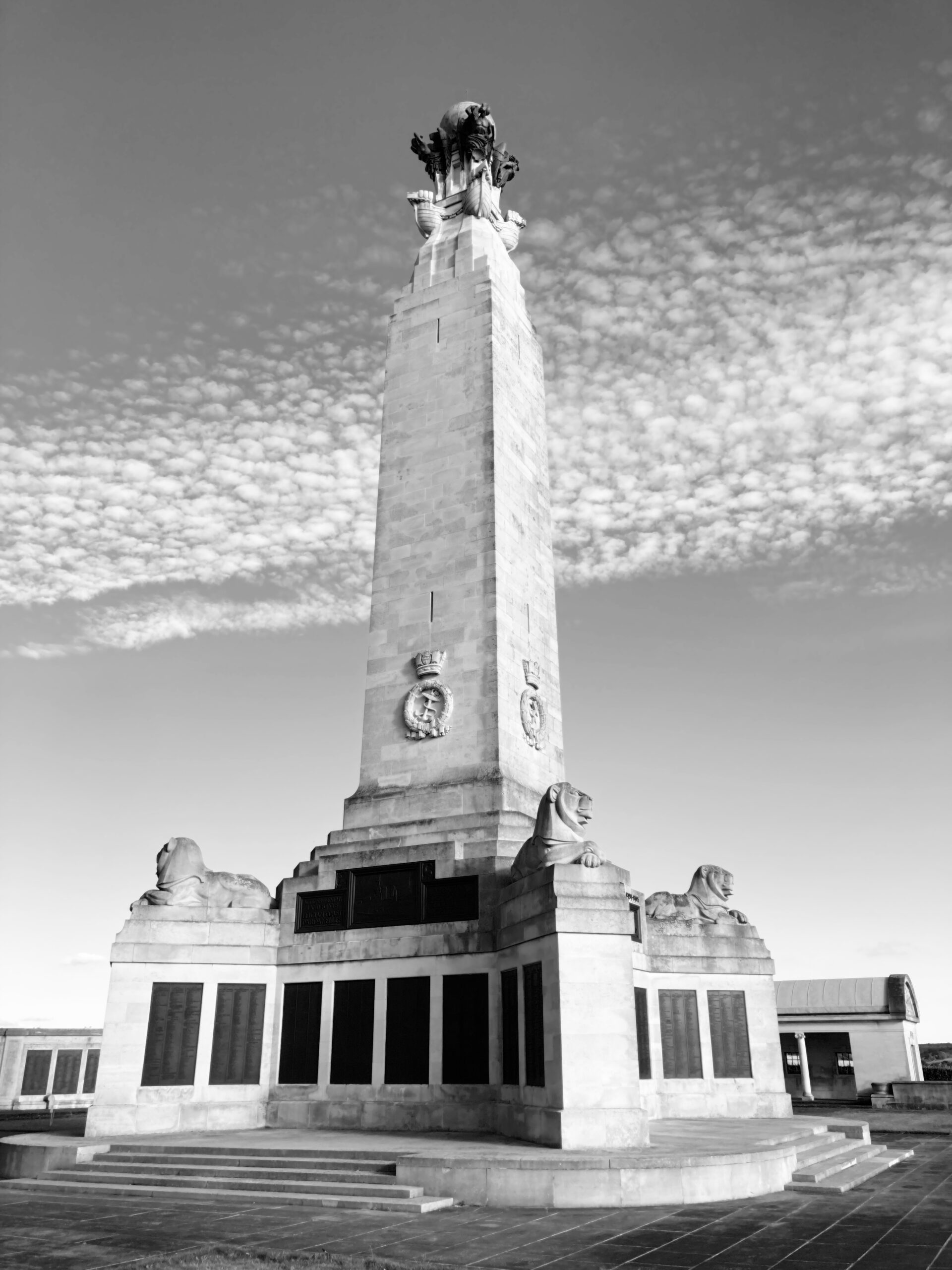
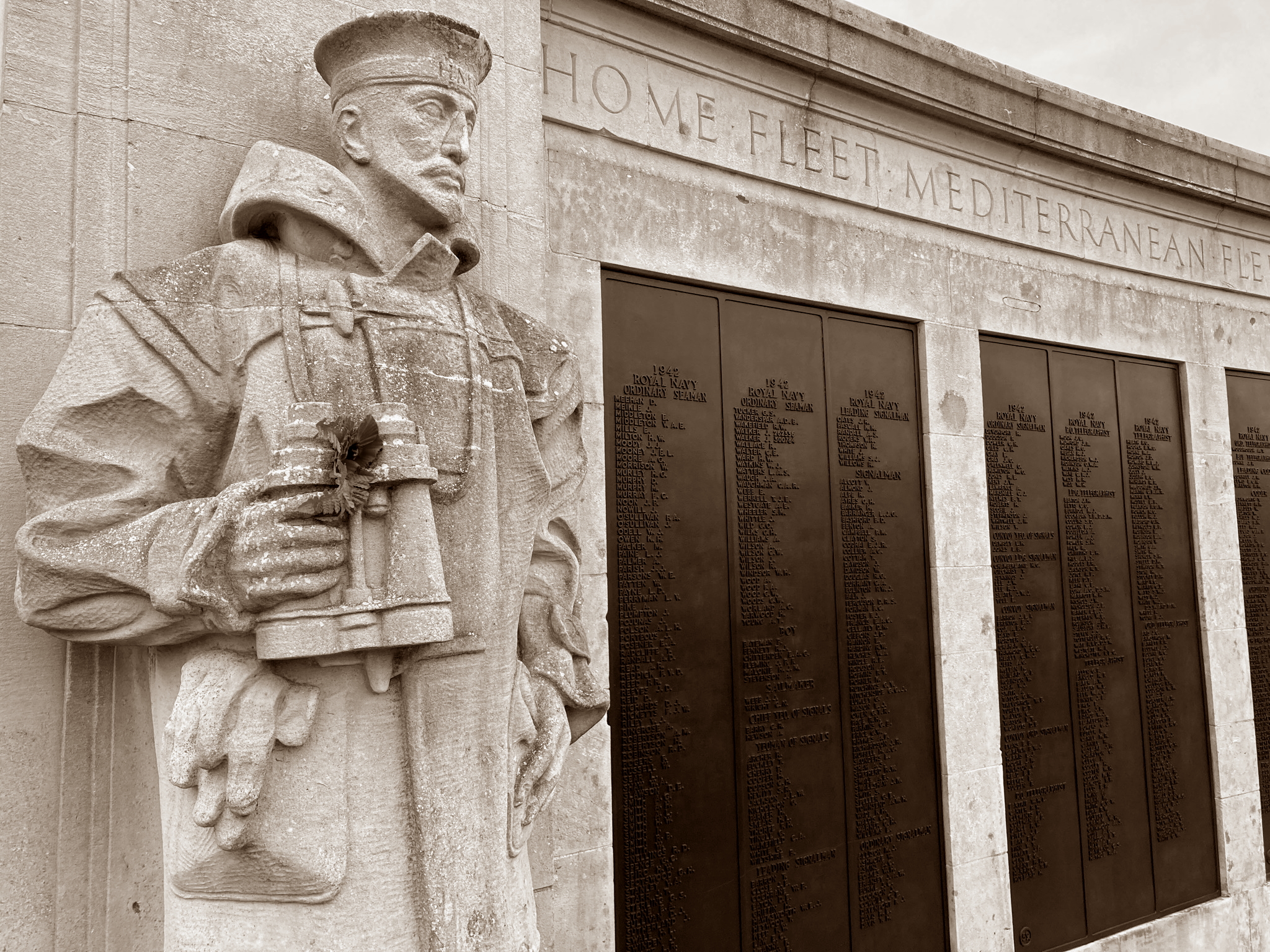
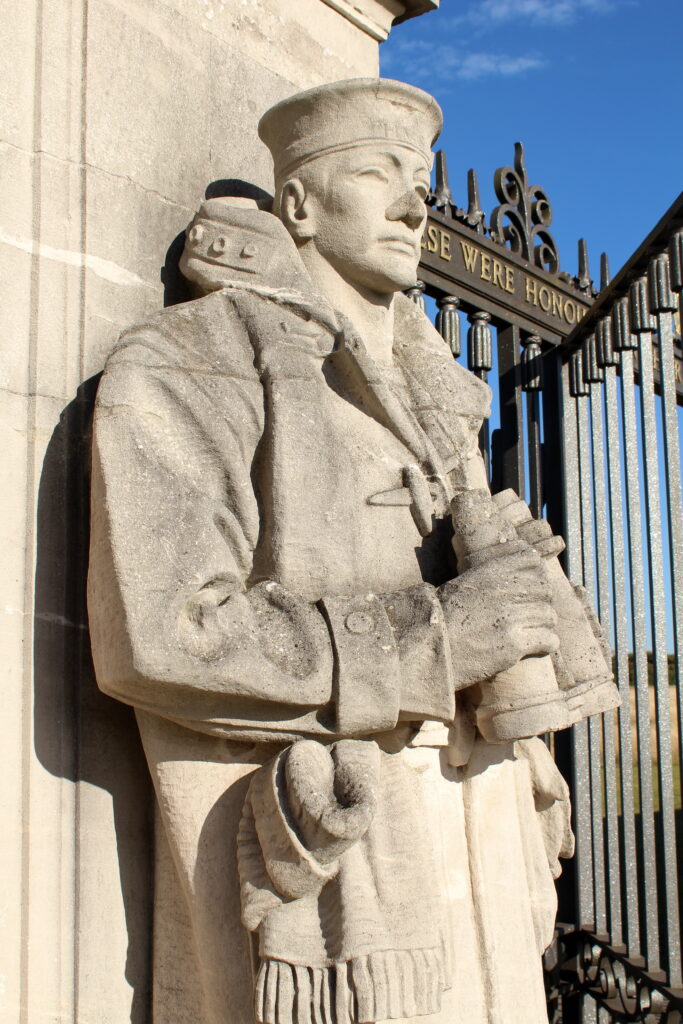
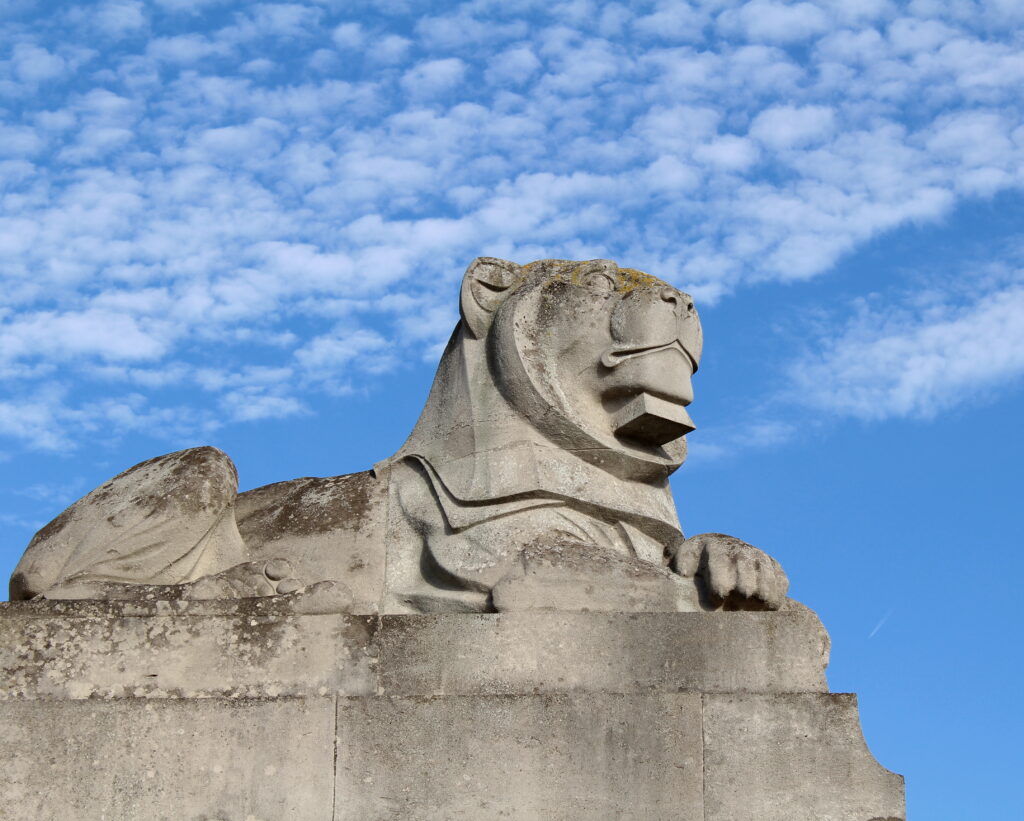
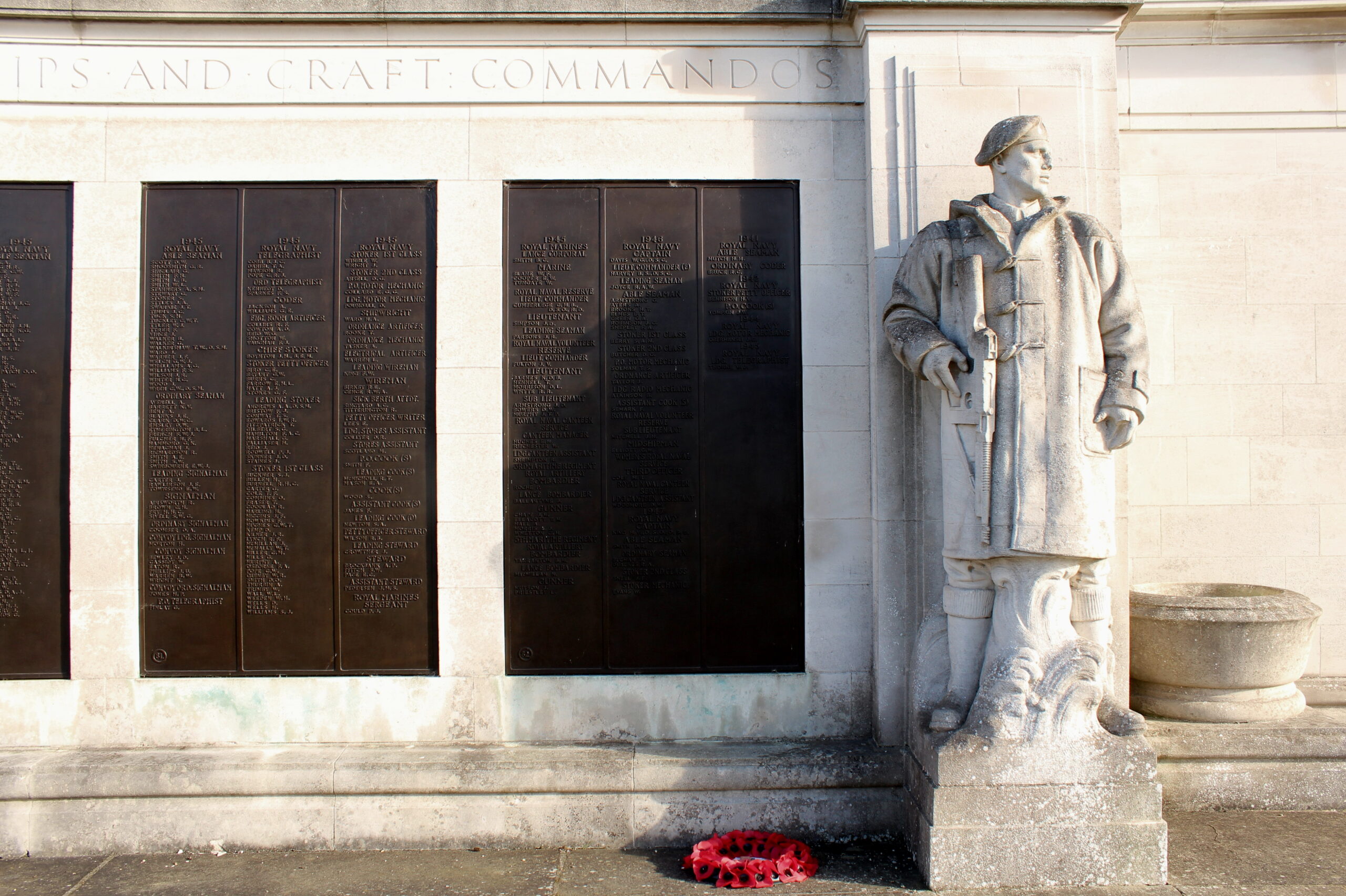
The memorial was later extended to commemorate the 10,098 sailors who gave their lives in World War II. Sir Edward Maufe designed the extension, with sculpture design from Sir Charles Wheeler and William McMillan. The extension to the memorial was unveiled on 15 October 1952 by the Duke of Edinburgh.
So the military and naval links are mighty, but what about the sporting ones? Well, the Great Lines were used as an exercise ground for the Royal Engineers, and for horse racing events in the 1820s and 1830s. It was also once a sports training ground for the Royal Engineers’ cricket team, which used to have a pitch on the Lines, and for the Royal Engineers’ football team who won the FA Cup in 1875 2-0 against the Old Etonians (two teams to remember if you’re a fan of the TV quiz show Pointless).
The land that we know now as the Great Lines Heritage Park became a public park for local people in 1989, but as I said earlier, I didn’t start properly enjoying it until 2020.
I’d been to the Great Lines before lockdown of course, but mainly for the annual fireworks display or occasional Sunday stroll. What daily walks during lockdown did was open my eyes and ears to the beauty of the changing seasons that I’d been missing all these years. The chirping of the crickets in the grasses in late summer and the sheer, unrelenting heat on a hot July day, the glorious colours of the leaves in autumn and the bracing freshness of the wind in winter and spring. This huge open park felt spacious and invigorating and precious – a cherished escape from what had become home and office combined.
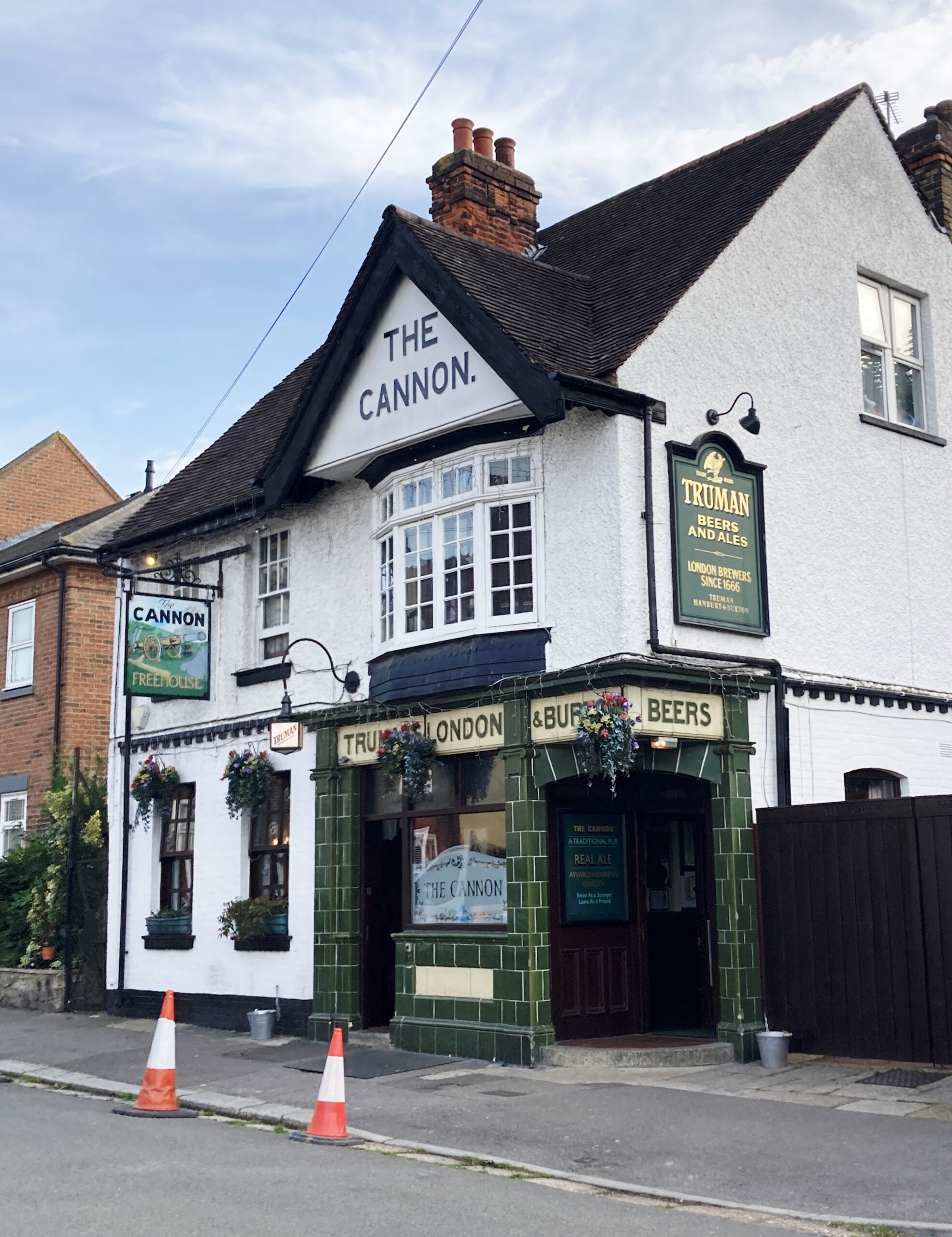
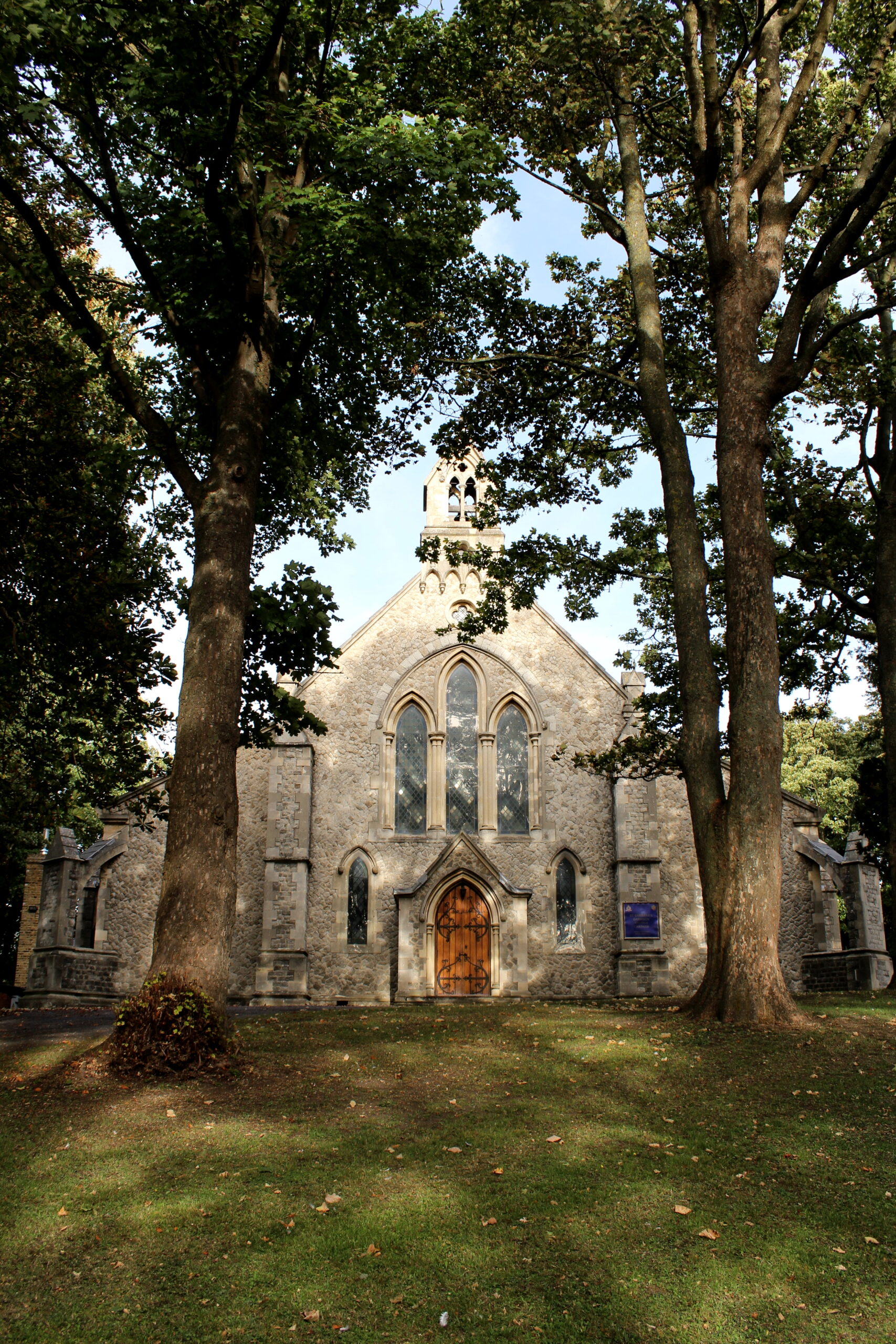
After a few weeks of walking from the top to the bottom of the Lines and back again, and as it became clear that lockdown was going to be carrying on for some time yet, I started extending my route, wandering down previously unknown paths and streets to see what was there – what else I hadn’t discovered. Just for the sheer heck of it, some days. I had time on my hands and suddenly not much else to do of an evening after all. And I found so many places! Walking to the end of Sally Port I came across The Cannon pub and St Barbara’s Garrison Church. The Cannon was closed then of course, but the Man of Kent and I resolved to visit it when pubs were allowed again, and we’ve enjoyed many lovely evenings there since. Check it out if you’re ever in Brompton. Also whilst wandering, I discovered The Glass Box Theatre at Mid Kent College. I’d never even heard of it before, but now I keep an eye on the listings to see what’s on. From Gillingham, you can walk into Chatham easily via the Lines. A favourite stroll of mine is down the Lines to the Brook Theatre, along the river past Chatham Library and the council offices at Gun Wharf, then back up past the Historic Dockyard and through Brompton. You can even, if you’re feeling particularly energetic, meander all the way from the Great Lines into Rochester – a nice way to begin a night out on a summer evening. (I wouldn’t recommend going back the same way though – it’s a steep hike back up those hills and not everywhere is well lit).
Last weekend, I discovered you can walk directly into Fort Amherst from the Great Lines. (How I managed to miss this during my lockdown walks, I do not know). The views across Medway from there are magnificent. The Fort itself is one of the best preserved Napoleonic forts in Britain and is free to visit (though there’s a charge for the tunnel tours). It’s also home to Unsolved Mysteries escape rooms.
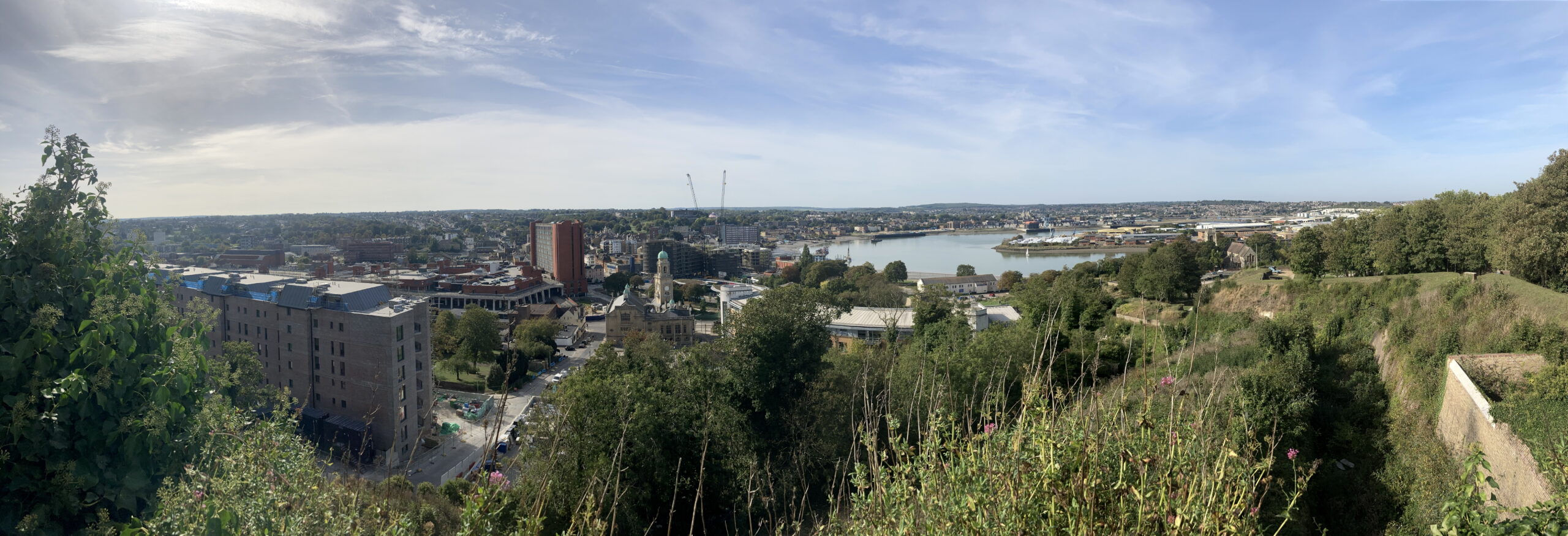
The Great Lines were a refuge in lockdown for many local people, but they also became a sanctuary for me when I left my job last year. Burnt out, lost and overwhelmed, I found the spacious quiet of the Lines to be one of the few places where I could think clearly. Half an hour on its blustery paths usually blew the cobwebs away, and I more often than not came home feeling better. I still feel like I do my best thinking there.
The other thing I love about the Great Lines is that it’s a gathering place. On weekends, multiple noisy football games are played at the bottom. Happy dogs are walked there by their owners. Joggers abound. Braver people than me picnic on the almost shadeless grass in summer. On Bonfire Night, it feels like the whole of Medway is standing on those fields to watch the brilliant free display put on by Medway Council. It’s a place for everyone, used by everyone. A former field of fire cradling a view and a heart and a mighty history. I wish it hadn’t taken a lockdown to make me appreciate the Great Lines properly, but I’ll now always be glad to have this place just around the corner.
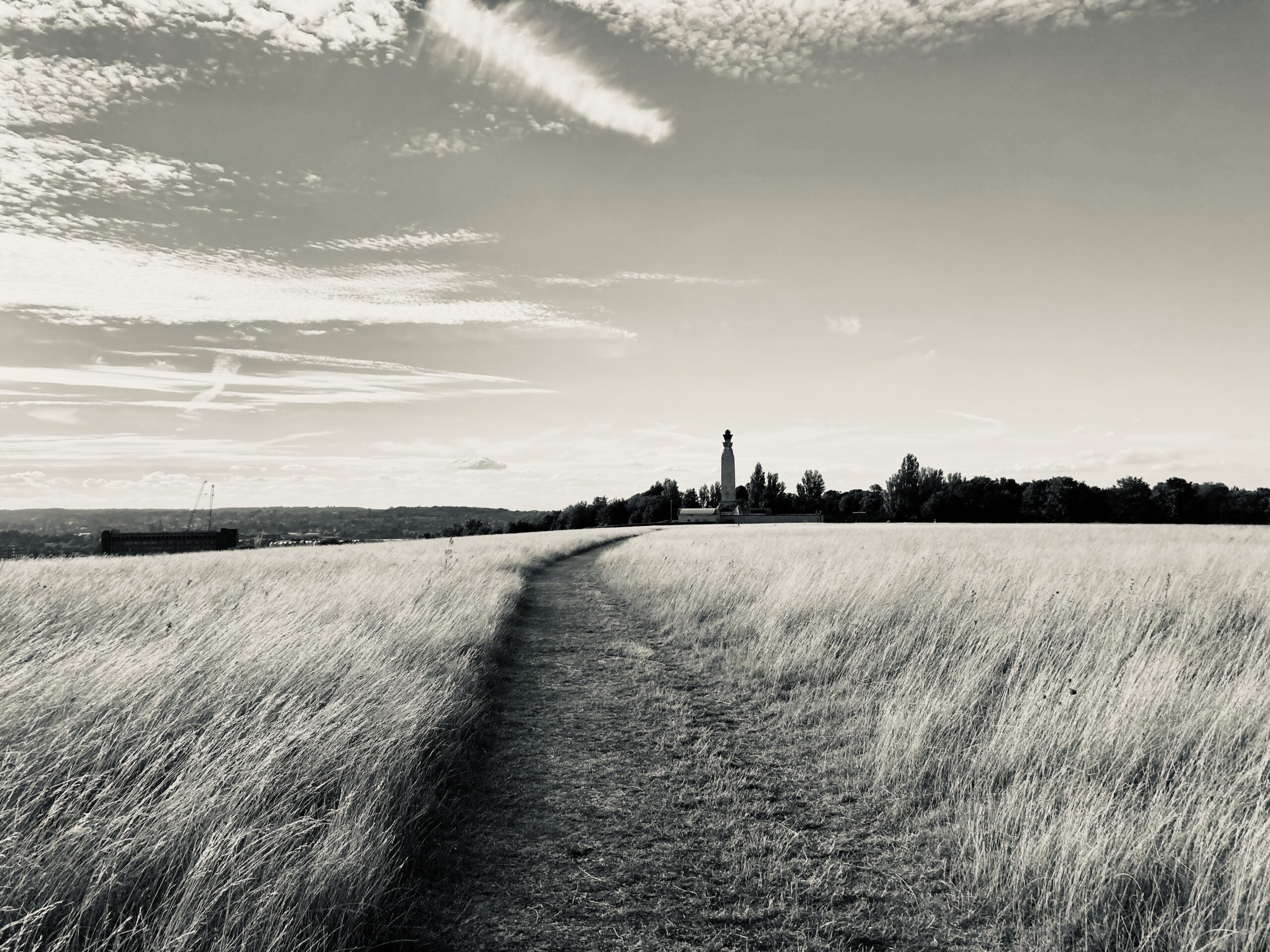
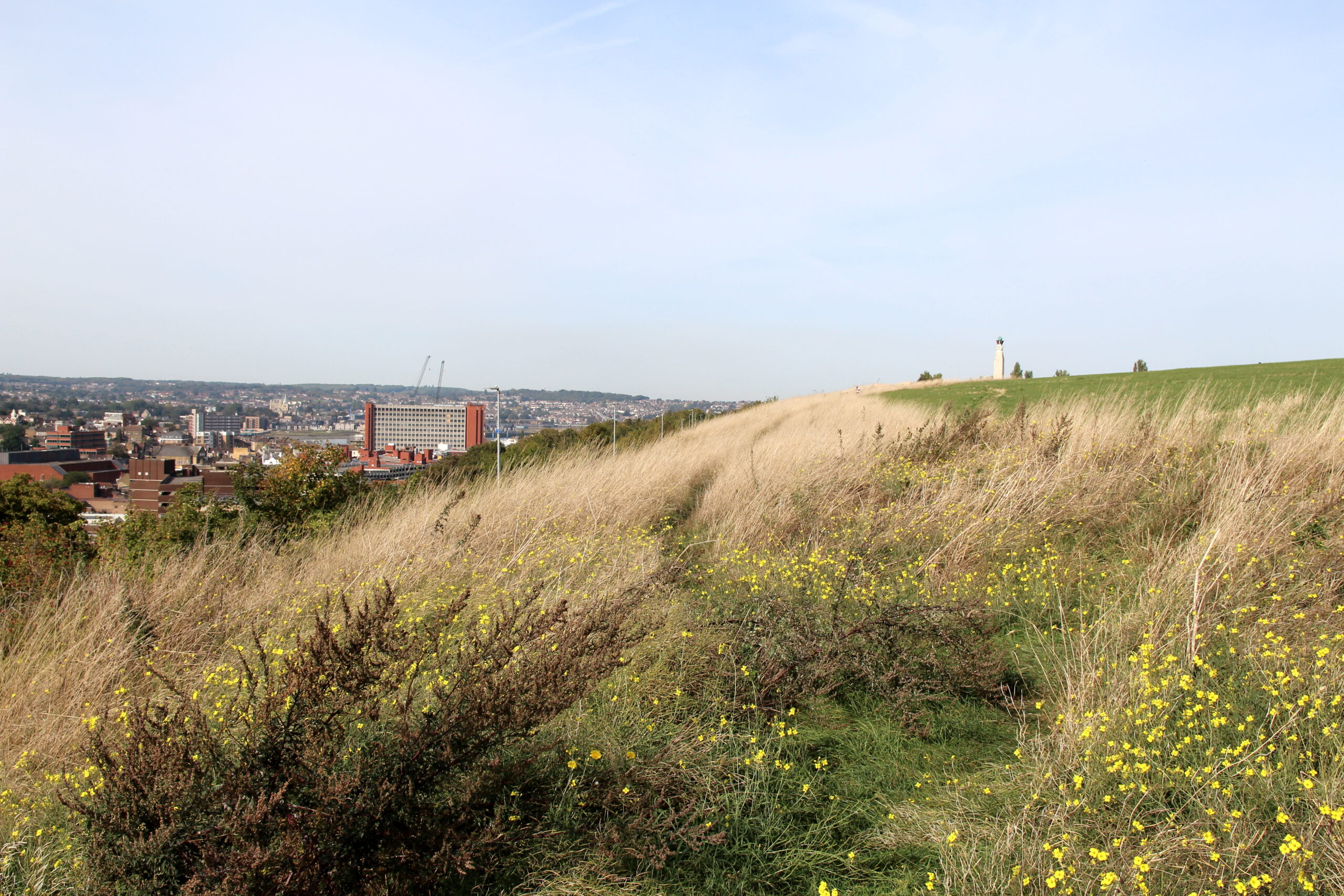
Leave a Reply